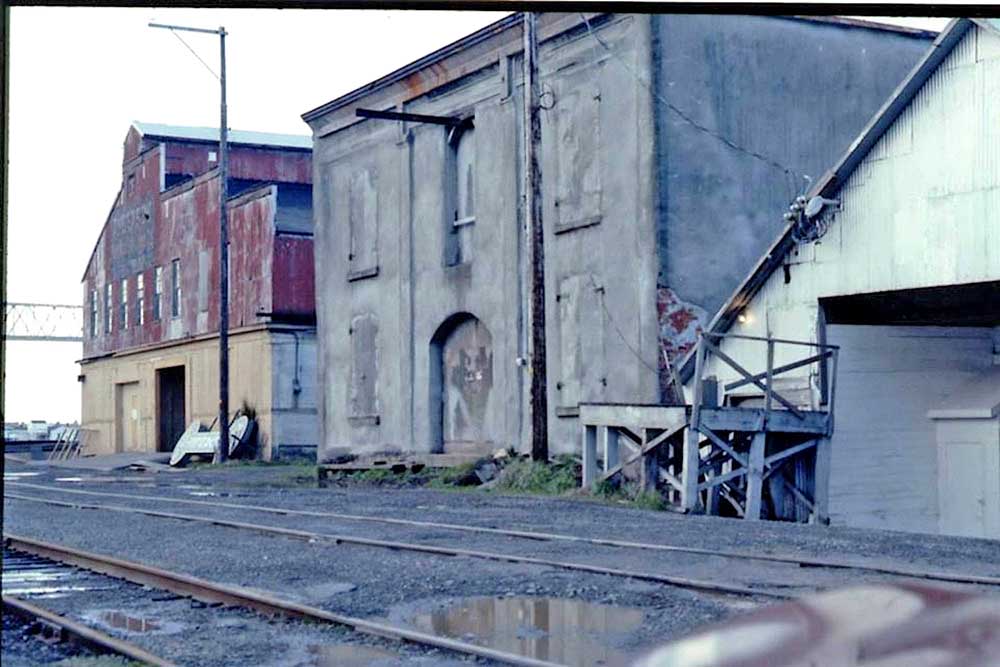Astoria Wharf & Warehouse
Published 5:26 am Friday, November 16, 2018

- Bottom right: The warehouse as seen in the 1970s.
ASTORIA — A multi-generational fisherman, Steve Fick grew up on the Lower Columbia River. After college, he started processing salmon roe, doing so by using the institutional knowledge of those who retired from Bumble Bee Seafoods.
In 1989 his business, Fishhawk Fisheries, purchased one of Astoria’s most iconic waterfront structures and its adjoining dock. Today, he is converting part of the structure to distill Fishhawk Fleet vodka, gin and whiskey.
Built in 1892 for the Astoria Wharf & Warehouse Co., the “bonded warehouse” is Astoria’s first building to be constructed from local brick. The stoutly built structure used brick from May & Thair, a short-lived brickworks in the Lewis & Clark area. Its foot-thick walls were exceeded only by its three-foot thick basalt foundation. Inside, old-growth Douglas fir joists rest on 400 feet of railroad iron.
The substantial structure’s original purpose was the storage of tin plate and accessories used in the manufacture of tin cans. When constructed, it was adjacent to the Pacific Can Co., a salmon cannery; within 60 years, seven different canning companies used the building.
The warehouse is currently used for packaging and storage by Fishhawk Fisheries, whose nearby plant is constructed on the pilings of the old Anderson Cannery.
Fick says he approaches the facility’s overall maintenance “systematically,” installing new mudsills (sill plates) and stringers beneath the docks. He estimates he replaces a bent (timber frame) or two every year. “It’s in decent shape,” he said.
Unlike many waterfront properties, about 60 percent of the work can be done from the shore at low water. The rest is done by pile bucks in work rafts. Sometimes they create a hole in the building’s floor and work from above rather than from a boat below. “Pile bucking is an art in and of itself,” he remarked.
The warehouse presents its own issues. Its nearly-flat roof is not ideal in a rainy climate. However, Fick has found success by installing white membrane roofing.
The building’s stucco needs repair. Last re-done in the 1950s, large sections have since delaminated from the brick. It is not clear whether the replacement stucco was harder than that which was on the building originally, or whether the brick is inherently soft. When restored, however, Fick says the building will look similar to stucco-finished buildings on Fisherman’s Wharf in San Francisco.
“I was looking for small businesses,” recalled Fick thinking about the underused warehouse. “And (former Astoria city manager) Paul Benoit invited me down to Alameda, California to see a distillery.” After visiting the distillery, Fick was convinced it would work in Astoria and in his warehouse.
“I come by it honestly,” said Fick regarding setting up a distillery. “There was a moonshiner who lived in a shack on my grandparents’ farm in Jewell.” The moonshiner’s name was Clarence O’Hoyt, who at the age of 91 began producing “White Mule” whiskey. County sheriff Paul Kearney, later arrested him. Whether it was good genes or plain orneriness, O’Hoyt lived until he was 102.
Fick’s small plant is a work in progress. The distillery will occupy the front third of the building. No walls have been constructed, but a water system was installed. And, Alex Johnson poured a partial concrete floor.
The building’s 12-foot ceilings and exposed structural system make the space appealing for any number of uses. “I’ve thought about the space,” said Fick. “Could we make it into a bar?” A test kitchen for seafood might work well there, too. “We could experiment with concoctions: fish head stew, salmon cheeks…. Make it really Astorian.”
“I want to do something fun with it; as long as it doesn’t become a job.”
For more information about renovating an old home or commercial building, visit the Lower Columbia Preservation Society website at lcpsociety.org


